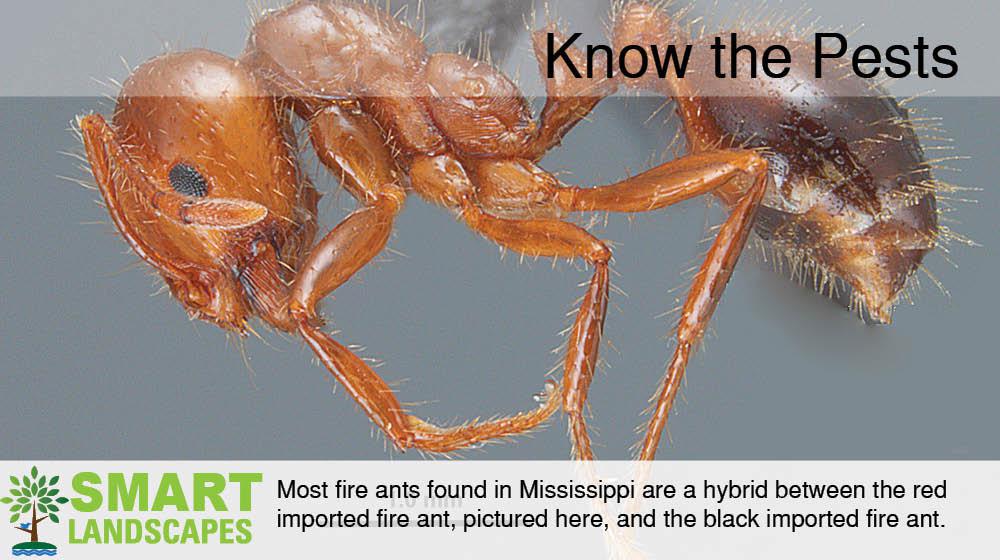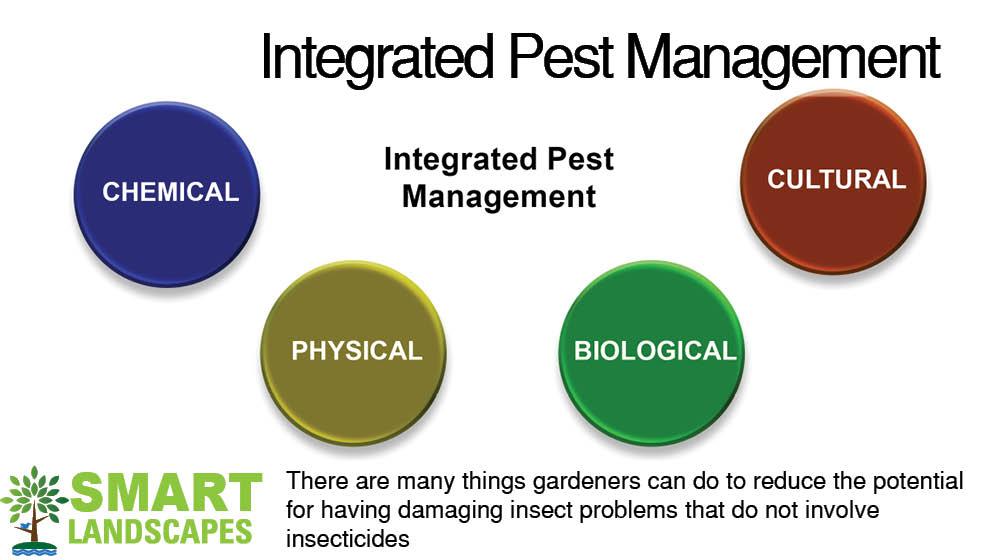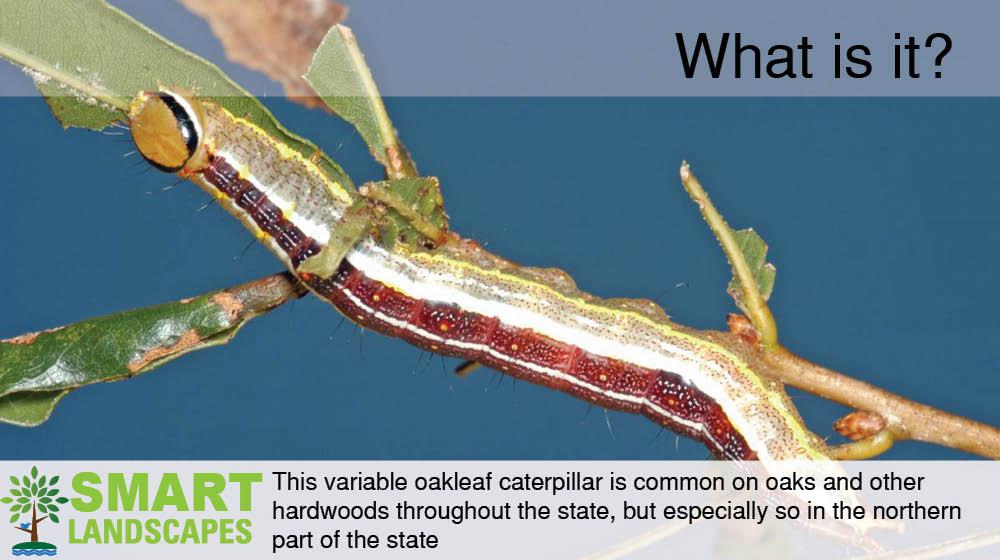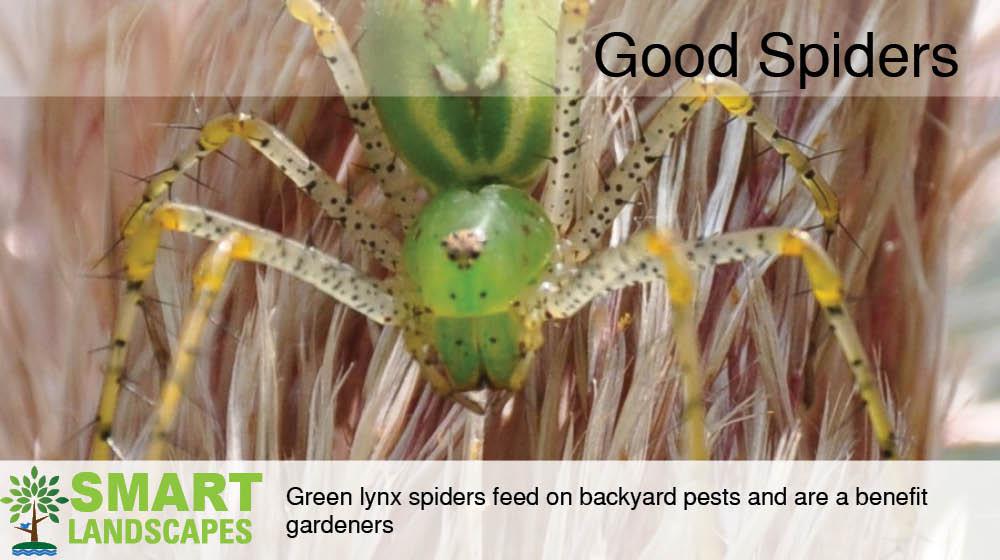Integrated Pest Control
Practice Integrated Pest Management
Integrated Pest Management (IPM) is a pest control method that uses a variety of compatible tactics to control the backyard pest population while minimizing the harmful effect chemical-based solutions can have on both human health and environmental safety.
The IPM approach is not aimed at eliminating all potential pests. Instead, it aims to keep pests at acceptable levels so that insecticides are minimized. Selecting the right plants for the location will also reduce the stress on plants and therefore make them more tolerant to insect attacks.
The following documents detail some Smart Landscape compatible solutions and methods that are available.
MSU Extension Service Publications
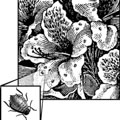
Integrated Pest Management in the Home Landscape
Sometimes insecticides are the only way to keep pests from damaging prized plants. But insecticides are not the only tools we have for managing insects. There are many things gardeners can do to reduce the potential for damaging insect problems that do not involve insecticides. These usually cost little to nothing and take much less time and effort than spraying. In most cases, insecticides should be used as the ”treatment of last resort” to control an insect population that has gotten out of hand. Wise gardeners use non-insecticidal insect management tools to help reduce their reliance on insecticides, but they also know how to use insecticides properly when necessary. This is known as integrated pest management.
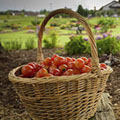
Organic Vegetable IPM Guide
Interest in non-chemical pest control has increased over the past several years. To some people, this means the same as “organic farming,” which implies nature’s way. But in this publication, we talk about controlling pests without chemicals, or at least fewer chemicals.
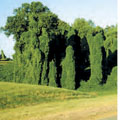
Mississippi's 10 Worst Invasive Weeds
Mississippi is being silently invaded by exotic plant species. These weeds are not just garden nuisances; they are changing the way natural areas function, and they are costing all of us money. Learn more about stopping the invasion in this helpful guide.
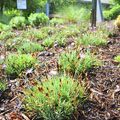
Mulches for the Landscape
Mulch helps keep your garden and landscape healthy. Mulching occurs regularly in nature with fallen leaves, twigs, spent flowers, and other materials. These natural mulches provide a protective covering for the soil.
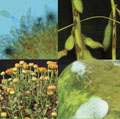
Plant Disease and Nematode Diagnostic Services
This handy booklet details how to use the plant disease and nematode diagnostic services offered by the Mississippi State University Extension.
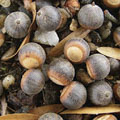
The Plant Doctor—Biscogniauxia (Hypoxylon) Dieback of Oaks
Biscogniauxia dieback (formerly called Hypoxylon canker or dieback) is a common cause of oak dieback in Mississippi. This disease, caused by either of two fungi, Biscogniauxia atropunctata or B. mediterranea, is found throughout the United States and is especially common in the South.
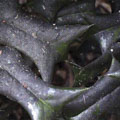
The Plant Doctor—Sooty Mold
Sooty mold is a frequent problem on the leaves of many evergreen shrubs including azaleas, camellias, laurels, and gardenias. It can also be a problem on deciduous trees and shrubs including crepe myrtles, Chinese elms, hollies, silver maples, sugarberries, or on plants growing beneath any of these plants. You may also see the black “sooty mold” on walls, sidewalks, fences, automobiles, or almost anything else that is under or around an infected plant.
Additional Resources
The Florida Yards & Neighborhoods Handbook
Chapter 6: Manage Yard Pests Responsibly page 33-38
http://fyn.ifas.ufl.edu/materials/FYN_Handbook_2015_web.pdf
Alabama Smart Yards Handbook
Chapter #8 pg 41-28
http://www.aces.edu/pubs/docs/A/ANR-1359/ANR-1359.pdf
Practice Integrated Pest Management (IPM)
https://peoplesgarden.usda.gov/sustainability/practice-integrated-pest-management-ipm
Integrated Pest Management (IPM) for Home Gardeners
http://aces.nmsu.edu/ipm/documents/ipm-for-home-gardeners-final.pdf

